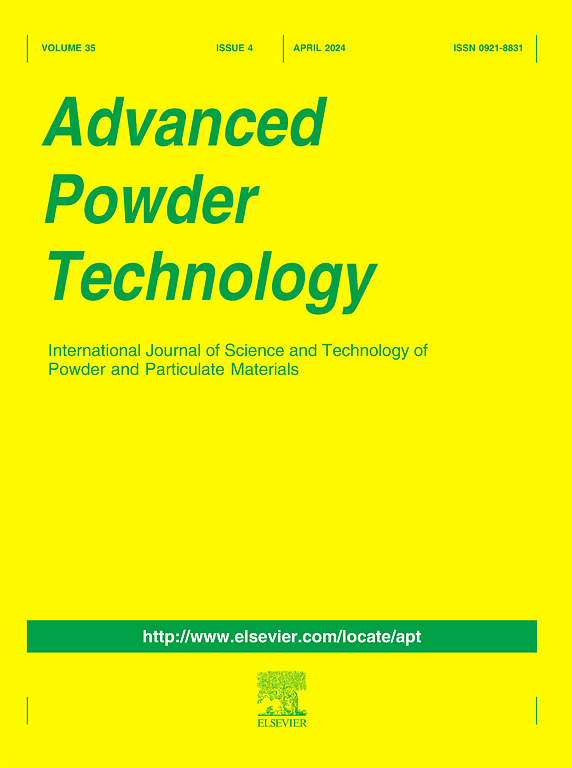Enhancing electric virtual impactor performance with condensational growth and efficient charging for size-selective sampling of fine and ultrafine particles
IF 4.2
2区 工程技术
Q2 ENGINEERING, CHEMICAL
引用次数: 0
Abstract
An electric virtual impactor can be used for size-selective sampling of airborne particles by utilizing an electric field to segregate particles based on their size, enabling only particles of a specific size range to be collected. This study utilized a condensational particle growth system to improve the aerosol particle charging efficiency and electric virtual impactor performance. A condensational particle growth system and a corona-needle unipolar charger were used together. Polydisperse particles ranging from 10 nm to 5 μm were grown to bigger droplets and charged to a high charge level in the corona needle charger before drying them in the evaporator. A charge level of more than 50 charges per particle was achieved for sizes of 20, 30, 42, and 55 nm. The highly charged particles were then sampled in the electric virtual impactor. The lower cutoff size of the electric virtual impactor could vary in the range from 30 nm to 1 μm while the upper cutoff size was fixed to 2.5 μm based on inertial separation mechanism. The developed system is expected to be very useful in sampling fine and ultrafine particles under normal pressure conditions, even by setting the particle size range suitable for the sampling purpose.

利用凝聚生长和高效充电增强电虚拟冲击器性能,用于细颗粒和超细颗粒的尺寸选择取样
电动虚拟冲击器可用于空气中颗粒的尺寸选择采样,通过利用电场根据颗粒的尺寸分离颗粒,仅收集特定尺寸范围的颗粒。本研究利用凝聚式粒子生长系统来提高气溶胶粒子的充电效率和电虚拟冲击器的性能。采用冷凝式粒子生长系统和电晕针式单极充电器。将10 nm ~ 5 μm范围内的多分散颗粒生长成较大的液滴,并在电晕针充电器中充电至高电荷水平,然后在蒸发器中干燥。对于尺寸为20,30,42和55nm的颗粒,每个颗粒的电荷水平超过50个。然后在电子虚拟冲击器中对高电荷粒子进行采样。基于惯性分离机制,虚拟冲击器的下截止尺寸可在30 ~ 1 μm范围内变化,上截止尺寸固定为2.5 μm。所开发的系统有望在常压条件下对细颗粒和超细颗粒进行采样,甚至可以设置适合采样目的的粒度范围。
本文章由计算机程序翻译,如有差异,请以英文原文为准。
求助全文
约1分钟内获得全文
求助全文
来源期刊

Advanced Powder Technology
工程技术-工程:化工
CiteScore
9.50
自引率
7.70%
发文量
424
审稿时长
55 days
期刊介绍:
The aim of Advanced Powder Technology is to meet the demand for an international journal that integrates all aspects of science and technology research on powder and particulate materials. The journal fulfills this purpose by publishing original research papers, rapid communications, reviews, and translated articles by prominent researchers worldwide.
The editorial work of Advanced Powder Technology, which was founded as the International Journal of the Society of Powder Technology, Japan, is now shared by distinguished board members, who operate in a unique framework designed to respond to the increasing global demand for articles on not only powder and particles, but also on various materials produced from them.
Advanced Powder Technology covers various areas, but a discussion of powder and particles is required in articles. Topics include: Production of powder and particulate materials in gases and liquids(nanoparticles, fine ceramics, pharmaceuticals, novel functional materials, etc.); Aerosol and colloidal processing; Powder and particle characterization; Dynamics and phenomena; Calculation and simulation (CFD, DEM, Monte Carlo method, population balance, etc.); Measurement and control of powder processes; Particle modification; Comminution; Powder handling and operations (storage, transport, granulation, separation, fluidization, etc.)
 求助内容:
求助内容: 应助结果提醒方式:
应助结果提醒方式:


